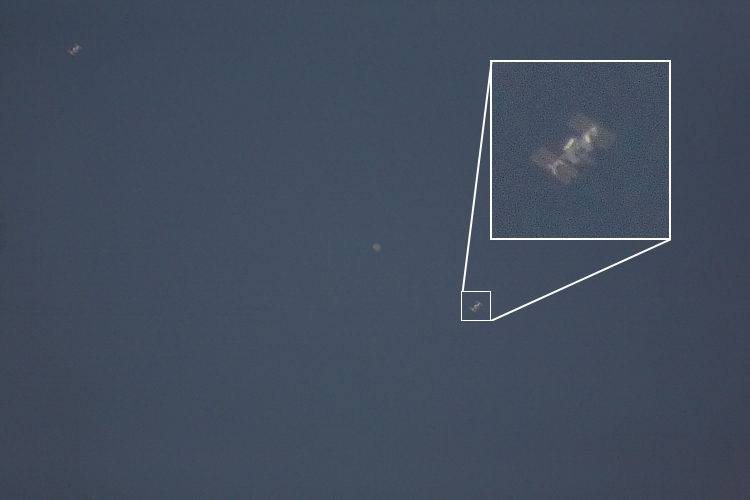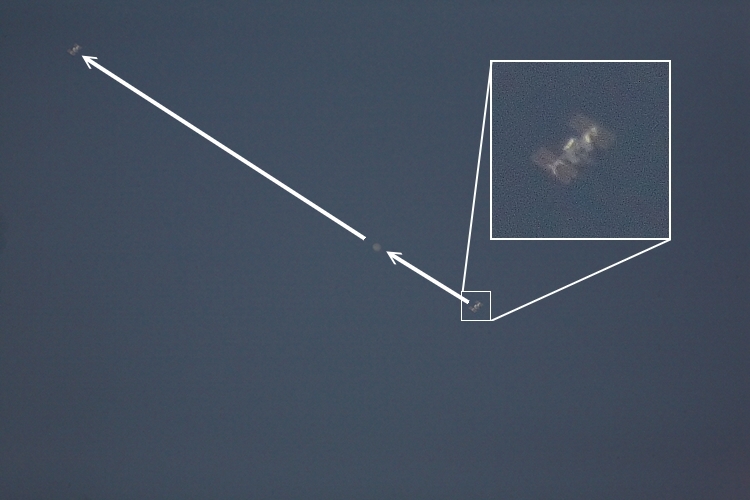
Following Skylab and Mir, the latest entry in orbit around our planet is the International Space Station. This piece of
latest technology measures over 70 meters in length and represents the culmination of over seven years worth of work by a
consortium of sixteen nations (United States, Russia, Canada, Japan and Europe). With an original budget of 60 billion
dollars and an anticipated 35 Shuttle missions for its complete construction, the life expectancy of Space Station Alpha
is thirty years. The first section of the ISS, the 24.2-ton Zarya module, was put into orbit in Nov/98 and was followed
by the placement of the US-constructed Unity module by the STS-98 crew in Dec/98. The third and fourth missions to ISS
(STS-96 in June/99 and STS-101 in May/00) involved the transport of various tools and cranes in anticipation of the
arrival of the third major component, namely the Zvezda Service Module in July/00. STS-97 in Nov/00 was the last shuttle
mission of the 20th century and was responsible for the delivery and installation of the solar panels. The first shuttle
mission of the 21st century, STS-98 (Feb/01), delivered the Destiny Laboratory Module. Finally, STS-100 (Apr/01)
delivered the station's robot arm and a second reusable cargo system (the Italian built Multi-Purpose Logistics Module
known as "Rafaello" which follows the earlier similar system "Leonardo").
Note: Earlier this week, the ISS was successfully captured transiting the Sun (click
here) following the departure of Atlantis
(STS-132)
and whose primary purpose during its twelve-day mission was to deliver and install two main modules to the ISS, namely
the Integrated Cargo Carrier and a Russian-built Mini Research Module (MRM-1) which was attached to the Zarya module.
STS-132 represents Atlantis' eleventh and final flight to the ISS and is to be retired from the active fleet immediately
thereafter.
The image below is the first attempt to capture the ISS without transiting either the sun
or moon as background and which is most difficult given the lack of contrast presented by the daytime bright sky as
well as the immense difficulty in achieving perfect focus. Although the Sun was used for focusing a few minutes earlier,
the absence of sunspots aggravated the situation. The ISS was captured on two successive digital images spaced approximately
0.33 seconds apart and layered to form a single composite image. The ISS was moving from the bottom right to the upper left
and, as suggested by the arrows in the annotated second image, transited (occulted?) the giant gas planet.
The body appearing in the center of the image below is Jupiter and whose apparent diameter of 37.53 arc-seconds is second
to the passing ISS and its apparent diameter of 42.1 arc-seconds. Jupiter's current magnitude is -2.3 with a phase of 99.1%.
Its elongation from the Sun was 69 degrees while Sol was at 34 degrees altitude.
Note: Following my successful capture of the ISS with the space shuttle Discovery (STS-114)
transiting the sun in late July/2005 and which appeared on NASA's APOD (AstroPhoto of the Day,
July 29, 2005), I received many requests for
instructions in the identification and observation of similar opportunities and which are now fully documented
here.
|
Satellite(s): Int Space Station USSPACECOM Cat No: 25544 (ISS) Physical Dimensions: 73.0 x 44.5 x 27.5 m Orbit / Inclination: 351.3 x 355.1 km, 51.6° Range (Image): 439.5 km Angular Diameter: 42.1 " (ISS) Pass Details (ISS):
Launch Date (UTC):
|
 
|
Date: May 29, 2010 09:08:58 UT+3 Location: Athens, Greece Equipment: AP 160 f/7.5 StarFire EDF AP 2x Convertible Barlow AP 1200GTO GEM Canon EOS 5D Mark I Baader UV/IR-Cut filter Exposure(s): 1 x 1/2000 sec ISO 1600 RAW image format 4368x2912 image size Continuous Servo Mode Manual Mode Software: Photoshop CS2 Processing: RAW to TIFF (16-bit conv) Levels Resampling Cropping JPG Compression |